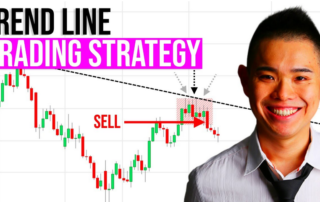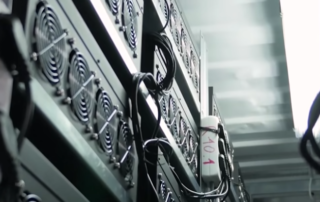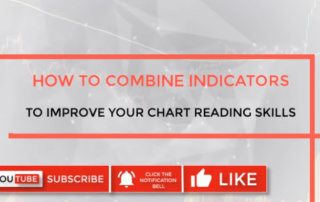The Correct way to use VWAP in your Trading
The doji candle is one of the most famous patterns followed closely by price action traders. A doji candle pattern appears when the open price and close price for a determined period are the same, or very close to being the same. The lengths of the shadows can be different. The perfect doji has the same open price and close price, however, something must be considered. If the difference between the open and close prices is within a few ticks, this could also be interpreted as a doji.
When you’re not sure if a candle should be considered a doji or not, just follow the recent price action. If the previous candles had open and close prices within a few ticks, then probably you should not consider the current candlestick as a doji. If the pattern forms alone, that’s a valid doji. In this chart, we see several candlesticks that could be interpreted as a doji pattern. But, looking at the bigger picture and at the price action as a whole, we should not consider the candles as doji, as they offer no relevance to the current trend. As you can see, this interpretation is quite subjective and there are no strict rules but to look at recent price action.
A series of very small real bodies as in this example would not be read as doji candles. Another technique is based on recent support and resistance levels. If the market is at an important market support or resistance and there are other technical signals, the appearance of an uncertain doji candle could be interpreted as a doji. Looking at this example, we are at an important level of support, tested several times in the past. The highlighted candle could be interpreted as a doji pattern, as it formed near an important level. Now, how to read doji candlestick. First, doji meaning market indecision. One of the most important values of a candlestick chart is the ability to read market sentiment. A doji candle is the perfect example for reading market sentiment. This pattern is an outcome of indecision in the market. A doji candlestick suggests a lack of control in the market either by the bulls or the bears. The lack of direction is clear: bulls moved prices higher, bears moved prices lower, but in the end, the market price closed exactly or very close to where it opened.
Now, if the doji candle highlights market indecision, it is safe to say that it does not offer insight into whether bulls or bears are in control. You have to guess the market’s next direction. So, the first thing you should take note is to use doji candle in combination with other technical indicators or price action, never on its own. Doji candle meaning possible reversal. Doji candle offers traders an early warning that there may be a change in market momentum or a possible change in direction if current conditions don’t change. Please remember that the “possibility” of a change of direction does not represent a guaranteed change of direction. The truth is that we don’t know if a trend is exhausted. We don’t know the exact moment when the trend is going to end. A doji will not guarantee that a certain setup will occur or that the market will reverse. Traders incorporate doji in their analysis in an effort to try to predict future price movements. They try to get the probabilities in their favor as much as they possibly can. So, a doji candle by itself is not significant enough to predict a reversal in prices, it represents only a warning of an impending trend change.
Steve Nilson, the person that introduced candlesticks to western traders, affirmed that doji candles tend to be better at indicating a change in trend when they occur at market highs instead of at market lows. This could be explained by the fact that for an uptrend to continue, new buying power must be present on the market, while a downtrend could continue at full strength without becoming weaker. Doji pattern near support and resistance Doji candles formed at relevant market highs or lows can sometimes turn into support or resistance areas. When forms in the middle of a trend or trading range, a doji candle has little significance. Doji candles are commonly met during periods of consolidation and can help traders to spot potential price breakouts. When it forms near round numbers or around previous levels of support and resistance, pivot points or Fibonacci retracements, doji candles offer traders decent entry points.
There are five different types of doji candles: The first type is the common doji. A common doji is the candlestick pattern we talked before. A doji candle pattern appears when the open price and close price for a determined period are the same, or very close to being the same. Next we have the gravestone doji. A gravestone doji forms when the doji is at, or very near, the low of the period. As the upper shadow is quite long, this means that the gravestone doji is a bearish pattern. The bearish outlook of the pattern is evident: the price opened and traded higher all the period, but closed where it opened, which also coincides with the low price for the period. Gravestone doji can also be interpreted as a failed rally.
Traded by itself, this pattern is not profitable. Just look at the picture above, the price indeed declined after the appearance of a gravestone doji, but not before taking some stop-losses on its way. That’s why it’s better to trade this pattern near strong support and resistance levels and in combination with other indicators. Then we have the dragonfly doji. The dragonfly doji forms when the open price and close price are at the high of the period. As this pattern has a long lower shadow this means that dragonfly doji is a bullish pattern. The bullish outlook of the pattern could be explained as follows: the price opened and traded lower all the period, but closed where it opened, which also coincides with the high price for the period.
This means that despite the selling pressure, the bulls entered the market strong and pushed the price back up. As in the case of gravestone doji, this pattern is not profitable when traded by itself. If we look at the picture above, the dragonfly doji pattern formed near an important level of support, which indeed drove the price higher. That’s why it’s important to trade this pattern near strong support and resistance levels and in combination with other tools. Next type is the long-legged doji. The long-legged doji has long upper and lower shadows in the middle of the period’s trading range, reflecting the indecision of buyers and sellers.
Throughout the period, the market moved higher and then sharply lower, or vice versa. It then closed at or very near the opening price. This signals market indecision, as neither the bulls nor the bears won the battle. From my experience long-legged doji candles will offer many false signals and should only be traded on higher time frames and in combination with other technical tools. The last type is the rare doji. The rare doji occurs the open, high, low, and close of the price are all the same.
This pattern forms when a market is very illiquid or the data source did not have any prices other than the close. The rare doji pattern should be interpreted as a complete and total uncertainty in the market direction. Now, this is how I trade the doji. Like I said before, I always take trades only around support and resistance areas. You can use recent market swings or fib retracements, but I prefer to use pivot points. This chart shows the exact sequence we need: a doji formed around a pivot point level.
The next one to three candles after a doji forms must close above the high of that doji candle. That is the key; the close is the confirmation that a bullish transition took place. So in this pattern, we are looking for a specific conditional change to take place in the market, namely, a higher closing high above a doji’s high, but must occur near a pivot point level. That’s the most important part of this setup which will help to eliminate and filter out false signals. Initially, use stop below the low of the doji. Once the market begins to produce a profit and moves in the desired direction, then you can change it or continually trail the stop. If you don’t like to trade 100% price action, you can also use a “filter” or backup process to confirm the buy signal with other indicator (stochastic, moving average, whatever you prefer) Here is another example, on a 15-minute chart on the British pound US dollar.
Once we added our pivot points, we have our first area of interest here. As you can see, the market traded around the pivot level and a doji pattern formed. He have a close above the doji’s high. Also note that the market closed above the moving-average which is also bullish. Once we have a close above the high of the doji, we can start searching for long entries.
To summarize, when you identify a doji at or near the pivot level, wait for confirmation of the next candle to close above the doji’s high. Here are other examples of trades, using doji patterns around pivot levels. Looking at these examples, i hope you noticed that I prefer to consider doji candles as accumulation zones where bull or bears are gaining momentum for a continuation of the main trend. I’m not chasing reversals like most of traders, I’m looking for continuation patterns. And I always combine this doji pattern with other technical tools, to confirm the main trend. If you got any value from this and learned something new, don’t forget to subscribe, hit the bell icon and leave us a like to show your support.
Until next time..
What You Need To Know About Buying Bitcoins
What You Need To Know About Buying Bitcoins [...]
9 Advantages of Using Bitcoin
9 Advantages of Using Bitcoin Bitcoin is an [...]
Trendline Trading Strategy: Proven Techniques That Actually Work
So, in today's training I would like to [...]
Bitcoin: Beyond The Bubble – Full Documentary
I think that the internet is going to [...]
How to trade on Bitseven, Earn bitcoin from Bitseven !!!
hello everybody and welcome to another video on [...]
How to Combine Trading Indicators (This Separates Professional Traders from Amateurs)
Knowing what indicators to use and what is [...]







